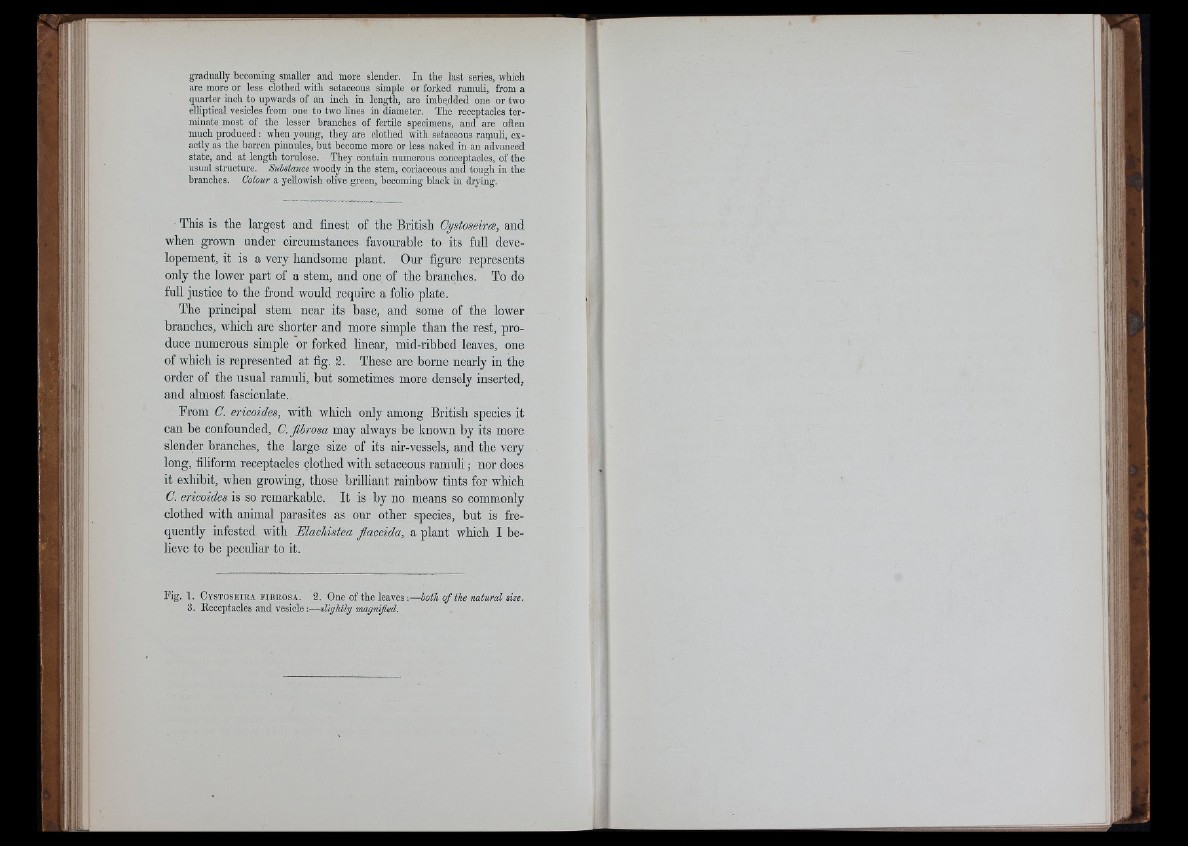
gradually becoming smaller and more slender. In tbe last series, wbicb
are more or less clothed with setaceous simple or forked ramuli, from a
quarter inch to upwards of an inch in leng-tb, are imbedded one or two
elbptical vesicles from one to two lines in diameter. Tbe receptacles terminate
most of tbe lesser branches of fertile specimens, and are often
much produced : when young, they are clothed with setaceous raipuli, exactly
as tbe barren pinnules, but become more or less naked in an advanced
state, and at length torulose. They contain numerous conceptaoles, of the
usual structure. Substance woody in the stem, coriaceous and tough in tbe
Colour a yellowish olive green, branches. becoming blaek in di-ying.
This is the largest and finest of the British Cystoseirce, and
when grown under circumstances favourable to its full deve-
lopement, it is a very handsome plant. Our figure represents
only the lower part of a stem, and one of the branches. To do
full justice to the frond would require a folio plate.
The principal stem near its base, and some of the lower
branches, which are shorter and more simple than the rest, produce
numerous simple or forked linear, mid-ribbed leaves, one
of which is represented at fig. 2. These are borne nearly in the
order of the usual ramuli, but sometimes more densely inserted,
and almost fasciculate.
From C. ericoides, with which only among British species it
can be confounded, C. fibrosa may always be known by its more
slender branches, the large size of its air-vessels, and the very
long, filiform receptacles clothed with setaceous ramuli; nor does
it exhibit, when growing, those brilliant rainbow tints for which
C. ericoides is so remarkable. It is by no means so comnaonly
clothed with animal parasites as our other species, but is frequently
infested with Elachistea fiaccida, a plant which I believe
to be peculiar to it.
Fig. 1. C y s t o s e i e a f i b r o s a . 2 . One of tbe leaves;— both o f the natural size.
3. Receptacles and vesicle;— slightly magnified.